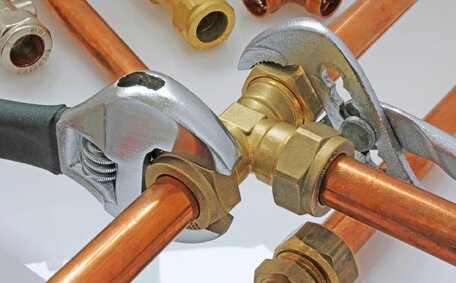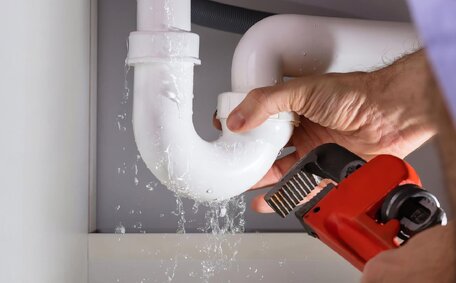What is Pipe Relining?
Pipe relining is a trenchless method of repairing damaged pipes without having to dig them up and replace them. Instead, a flexible epoxy resin coating is inserted into the existing pipe, effectively creating a 'pipe within a pipe’.
Pipe relining provides an alternative to traditional pipe replacement that is often much less disruptive and expensive. Rather than digging trenches to access pipes and cause significant damage to yards, gardens or structures, pipe relining can be completed from two access points - an entry and exit. This also means minimal disturbance inside your home.
The resin coating bonds to the inside of your existing pipes, sealing cracks, repairing damage caused by tree roots or corrosion, and preventing future leaks and blockages. Over time, this restores your pipes to a structurally sound condition that can last for decades.
Pipe relining is suitable for all types of pipes including sewer and stormwater drains, water supply pipes and gas lines. The process involves cleaning and inspecting the pipes, then installing a resin-soaked liner which hardens to form a smooth, seamless pipe lining inside the old pipe.
By opting to reline instead of replace your pipes, you can save time, money and avoid a lot of mess or damage to your property. Pipe relining allows pipes to be restored in-place quickly and efficiently.
When to Consider Pipe Relining
There are several situations where pipe relining should be considered as a repair option:
Significant Damage or Deterioration
If your pipes have developed cracks, leaks, or have been damaged by tree roots, corrosion, shifting soil, etc., then relining provides an effective solution. Digging up and replacing severely damaged pipes can be highly disruptive and expensive.
Preventative Maintenance
Even if your pipes are still functioning, relining older pipes can be wise preventative maintenance. It extends the lifespan of ageing pipes and helps prevent future issues. Catching problems early is much more affordable.
Low Water Flow or Pressure
A buildup of mineral deposits, grease or accumulation of debris in pipes can restrict water flow. Relining is a great way to restore normal pressure and flow without replacing the whole pipe.
Hot Water Pipe Issues
Hot water pipes tend to develop scale buildup and corrosion faster, which can reduce flow. Relining provides an efficient and affordable repair option.
In many cases, pipe relining is the optimal solution. It restores your pipes from the inside-out with minimal disruption to your home or property. Contact our team today to discuss whether relining is right for your pipe issues.
The Pipe Relining Process
The pipe relining process involves several key steps:
- Initial CCTV pipe inspection. A camera is fed through your pipes to locate any damage, blockages or root intrusions. This allows the team to assess if relining is suitable.
- Pipe cleaning. Your pipes are thoroughly cleaned using specialised water jetting equipment to remove any built-up debris or deposits.
- Resin preparation. Epoxy resin is mixed and coated onto a flexible felt sleeve liner or rolled into a spiral wound tube liner.
- Installation. The resin-saturated liner is inserted into the pipe through an access point and pushed through to the exit access point.
- Curing. Once in position, the liner is inflated and the resin then cures under temperature or UV light to harden.
- Final CCTV inspection. Cameras check the liner has cured smoothly and sealed all joints.
- Reconnect services. Finally, any service connections into the pipe are reinstated, and your plumbing restored.
The pipe relining process is minimally invasive, as it does not involve excavating or destroying your yard, floors or walls. The specialist equipment used allows pipes to be restored from the inside out in the fastest and most effective manner. If you need your pipes assessed for relining, contact our team today to get started.
Do I Have to Vacate My Property?
In most cases, homeowners do not need to vacate their property during the pipe relining process. This is one of the major benefits of trenchless relining compared to traditional pipe replacement methods.
The pipe relining process involves minimal disruption inside your home. Access is only needed to the entry and exit points, usually an external laundry pipe and an internal pipe like a toilet waste line. All work is contained within the pipe network.
Experienced plumbers use specialised equipment like CCTV cameras to navigate pipes and guided liners that follow your pipe’s path without the need for invasive digging or destruction of walls, floors etc.
You may need to be without water supply to the relined pipes for a few hours during the curing process. But plumbers can schedule relining work conveniently around your availability so that you remain living in your home.
For severely damaged sewer lines that are still functioning, pipe relining is completed in stages to avoid full service disruption. Your plumber will discuss options to minimise impact.
In rare cases where complete replacement is needed, short-term vacation may be required. But for most relining jobs, you can comfortably remain in your home during the 1-2 day process.
Benefits of Pipe Relining
Opting for pipe relining offers a number of excellent benefits compared to traditional pipe replacement:
Less Invasive
Pipe relining allows pipes to be repaired in place without the need for extensive digging or destruction inside walls and floors. It is much less invasive and disruptive than pipe replacement.
Time Savings
Relining is completed in just 1-2 days with minimal impact to your home. Traditional replacement can take weeks and require temporary relocation.
Cost Savings
Relining existing pipes costs a fraction compared to full pipe replacement. You can save thousands of dollars and avoid landscaping costs.
Prevents Future Damage
The epoxy coating seals and stabilises your pipes, protecting them from future damage by tree roots, corrosion or soil movement.
Long Lasting
High quality pipe relining can last for decades. This avoids repeat repairs and provides long-lasting peace of mind.
With all these benefits, pipe relining is highly recommended over replacement in many situations. Contact us to discuss the most suitable option for repairing your pipes.
Pipe Relining vs Replacement
When faced with pipe issues, homeowners often assume full replacement is the only option. However, pipe relining provides an excellent alternative that offers many advantages over replacement.
The main benefit of pipe relining is it’s far less destructive and disruptive than digging up and replacing pipes. Relining can restore your plumbing from the inside out, without having to damage your walls, floors or yard.
Pipe relining also takes a fraction of the time. It can usually be completed in 1-2 days, while replacement often takes weeks. This minimal disruption allows you to continue living in your home.
Cost savings are another major incentive to choose relining. Pipe replacement involves extensive excavation work, new materials, landscaping repairs and potential redecoration. Relining provides substantial cost savings by restoring your existing pipes.
Replacement does have a place for completely failed or severely damaged pipes. But in many situations, relining provides the optimal and most affordable fix. It prevents future damage and lasts for decades.
When faced with plumbing issues, our professional team takes the time to assess all repair options. We’ll advise you if pipe relining is the best solution to restore your plumbing in the fastest, most minimally invasive and cost effective manner.
How Much Does Pipe Relining Cost?
The cost of pipe relining will depend on a number of factors, but homeowners can expect to pay anywhere from $150 to $450 per linear metre.
A standard home may need around 20 to 40 metres of pipe relined, bringing the total cost to between $3,000 and $18,000. However, prices can vary significantly based on pipe size, material, accessibility and repair complexity.
To gain an accurate price estimate, a detailed inspection by a professional plumber is recommended. They will assess the scope of damage, length of pipes and difficulty of access. Quotes take these specifics into account.
While not the cheapest option, pipe relining provides excellent value compared to full replacement. There are also payment plans available to help spread costs over time.
The price is well worth it for a long-lasting repair that prevents future damage and avoids the mess and disruption of pipe replacement.
When weighing up your options, get in touch with our team. We can provide an obligation-free quote outlining the costs based on your property’s unique requirements. Pipe relining is often an affordable investment compared to replacement.
How Long Does Pipe Relining Last?
When professionally applied, high quality pipe relining can last anywhere from 20 to 50 years, depending on pipe conditions and environmental factors.
Most epoxy resins provide a long service life of 50 years or more before needing to be repaired or replaced. Over this time, relined pipes remain protected against damage from tree roots, ground movement, corrosion and normal wear and tear.
However, the lifespan can vary based on factors like:
- Pipe material – plastic may last 50+ years, concrete or clay around 25 years.
- Pipe size – larger diameter pipes tend to have a longer service life.
- Pipe condition – severe existing damage may shorten lifespan.
- Soil type and ground movement – highly reactive soils apply more stress.
- Flow conditions – high pressure flows cause faster wear.
- Workmanship – a quality application maximises longevity.
Our expert plumbers use top-tier epoxy resins and meticulous application methods to provide the longest-lasting pipe remediation. With the right conditions, we guarantee our pipe relining to last at least 20 years before needing repair.
Regular maintenance checks of your relined pipes are recommended. But you can expect an extensive service life from this minimally invasive and cost-effective solution. Contact us to discuss the lifespan you can expect for your property’s pipes.
Choosing a Qualified Pipe Relining Company
When it comes to pipe relining, choosing the right company for the job is crucial. Here’s what to look for in a qualified and reputable pipe relining company:
Experience and Training
Look for a company with a long track record of successful pipe relining projects. They should have highly trained technicians who are certified in the latest trenchless relining methods and equipment.
Quality Materials and Guarantee
The company should use top-tier epoxy resins that meet industry quality standards and have a proven track record of longevity. There should be warranties or guarantees backing up the quality of work.
Full-Service Offering
Choose a company that provides turnkey solutions for all stages of a project. This includes inspection, cleaning, relining, reinstating connections and final testing. Having all services in-house ensures smooth end-to-end pipe remediation.
Safety-Focused
Look for safe working practises like proper equipment operation training, compliance with regulations, and public liability insurance for your protection.
Expert Advice
Opt for a company that provides transparent quotes, expert diagnostics of your pipes, and tailored solutions to match your property’s unique requirements.
Best Value
While pipe relining is a cost-effective solution, get quotes from a few reputable companies before deciding. Choose the best value rather than the cheapest quote.
Taking the time to choose the right pipe relining company means your project will be handled safely, efficiently and to the highest standards. Contact our team to learn more about our full range of pipe relining services and how we can restore your plumbing to its best condition.






